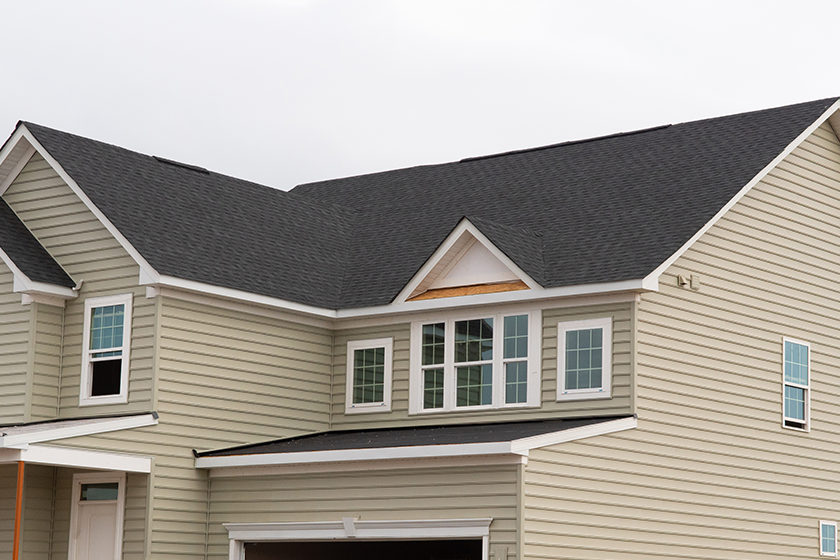Knowing the different types of roof siding flashing is ideal for homeowners and contractors who want to protect home’s roof from water damage and extend the lifespan of siding. Siding flashing acts as a barrier, directing water away from vulnerable areas to prevent leaks and structural problems. Let’s explore the common siding flashing types and their uses.
What Is Siding Flashing?
Siding flashing is a thin material installed at key points on a home’s exterior to manage water runoff. Roof flashing is crucial in areas where siding meets other surfaces, such as windows, doors, or the roofline. It helps prevent water from seeping into cracks, maintaining the integrity of your home’s structure. Proper flashing around the roof is especially important for preventing leaks and moisture damage at critical junctions.
There are several siding flashing types, each designed for specific applications. Choosing the right type for your project ensures long-lasting protection and a seamless finish.
Step Flashing
Step flashing is used where siding meets a sloped roof. Installed in overlapping sections, it creates a watertight seal between the roof and the siding. Each piece of flashing is tucked under the siding and overlaps the shingle below, effectively channeling water away.
Step flashing is often made of galvanized steel or aluminum, both of which are resistant to corrosion. It’s a popular choice for its durability and effectiveness in areas prone to heavy rainfall.
Z-Flashing
Z-flashing is a versatile option used to protect horizontal joints between siding panels. Its “Z” shape allows it to fit snugly between the upper and lower panels, directing water away from the joint.
This type of flashing is commonly used with materials like engineered wood or fiber cement siding. Proper installation ensures that water doesn’t seep into the joint, helping to prevent rot and other moisture-related issues.
Window and Door Flashing
Specialized flashing is installed around windows and doors to seal gaps and prevent water infiltration. These flashings often include adhesive-backed membranes or pre-formed pieces that fit snugly around openings.
By channeling water away from these vulnerable areas, window and door flashing reduces the risk of leaks and mold growth. This type of flashing is essential for maintaining a weather-tight seal around your home’s openings.
Drip Cap Flashing
Drip cap flashing is installed above windows, doors, or other horizontal trim pieces. Its purpose is to direct water away from these elements and prevent it from pooling or seeping into the structure.
Drip caps are usually made of aluminum or vinyl and are designed to blend seamlessly with the surrounding trim. They’re an affordable and effective way to enhance the durability of your siding.
Corner Flashing
Corner flashing protects the edges where two siding panels meet at a corner. This type of roof flashing ensures a tight seal, reducing the likelihood of water penetration.
Corner flashing is available in various materials, including metal and PVC, and it’s often color-matched to the siding for a cohesive look. It’s an excellent option for reinforcing the durability of your home’s exterior.
Base Flashing
Base flashing is installed where the siding meets the foundation of your home. It helps prevent water from pooling at the base and seeping into the foundation, which can lead to structural issues.
This type of flashing is essential for homes in areas with heavy rainfall or snow, as it protects the foundation from water damage over time.
Is L Flashing the Same as Wall Flashing?
L-flashing and wall flashing are both types of flashing that help seal areas where two surfaces meet. However, they are used in slightly different applications. L-flashing is typically used at the base of a wall or between siding panels and windows, forming an “L” shape to direct water away from the structure. Wall flashing is installed around walls and other vertical surfaces to prevent water from seeping into the siding and structure.
While both serve the same general purpose, L-flashing is more commonly used around corners or where the wall meets the foundation, while wall flashing is more versatile and used in various locations.
What’s the Difference Between Flashing and Counterflashing?
Flashing and counterflashing both serve to protect your home from water intrusion, but they are installed in different ways. Flashing is usually installed first and provides a basic seal, while counter flashing is installed over the top of the flashing to provide an extra layer of protection.
Counterflashing is often used in areas like chimneys, where a second layer of flashing is necessary to direct water away from the joint between the chimney and the roof. While both are important, counterflashing is typically the second line of defense against water damage.
How Many Types of Siding Flashing Are There?
There are several siding flashing types, including step flashing, Z-flashing, corner flashing, and drip cap flashing. Choosing the right flashing type for your home roof depends on factors like the type of siding, climate conditions, and the location of vulnerable areas.
Working with a professional contractor can help make sure you select the best roof flashing type for your home’s needs and provide long-lasting protection.
Call Monastery Roofing for Expert Siding Services
Protecting your home from water damage starts with the right siding and flashing. Monastery Roofing, a family-owned business, offers premium siding installation in Maine, tailored to your roof needs. Unlike other contractors, we use our own crews to guarantee top-notch workmanship. We also stand behind our work with a lifetime workmanship warranty.
Contact us today and let Monastery Roofing help you choose the best roof flashing for your siding project and ensure a seamless, professional finish.

